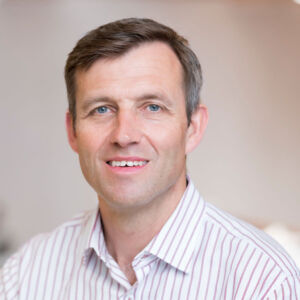Lessons from one of Australia's best employers

EISS Super was named one of Kincentric's Best Employers in Australia based on employee-generated data. We talk with EISS' Lisa Elias, general manager for people and culture, about ways to measure employee satisfaction and encouraging an agile workplace in the COVID-era.

EISS Super was named one of Kincentric's Best Employers in Australia based on employee-generated data. We talk with EISS' Lisa Elias, general manager for people and culture, about ways to measure employee satisfaction and encouraging an agile workplace in the COVID-era.
Being named one of Kincentric's Best Employers is a great recognition, but is the culmination of a longer process. How do you keep tabs on how employees are feeling during the course of the year?
We have regular, proactive check-ins with employees, including manager 1:1s, team catchups and quarterly update days - and two-way communication is encouraged. This is all especially important while we are working virtually due to COVID-19 restrictions.
We as an HR team also have an open-door policy - my team and I are always available to listen to staff concerns, address any questions they might have, or offer any assistance they might need.
We have several tools in place we use regularly too: we promote our confidential employee assistance program, we run seminars on resilience and optimism to give staff a platform to raise questions and develop new skills and strategies, and we run regular surveys. We've just run one on the "Future of Work" to capture employee sentiment on working remotely as well as their preferences around returning to the office as restrictions begin to be lifted. This data is shared with staff - reflecting their voices back to them demonstrates they are being heard and we are taking notice. Annually, we run a learning needs analysis survey for employees to share their perceptions of their capability so we can plan relevant learning and development initiatives.
We also monitor key data like absences, turnover, retention rates, and exit interview commentary - these give us good insight into how things are working.
What's up next? We've just rolled out a new HRIS and now have the capability to run monthly and quarterly "pulse checks" in-house which will keep us up-to-date between our external annual engagement surveys.
How do you position the business to potential executive-level employees? What are they most interested to learn about you?
First of all, we are a profit-to-member fund. That model has certainly been an attraction for those coming out of the retail space, particularly from some of the larger funds. This is supported by our staff values: in addition to our "Members First" mantra, the value of most interest to executives is probably that of "Be accountable, get it done". With us, accountability and ownership go hand in hand; whereas elsewhere you often see one without the other.
The size of our business is an advantage too - we're small enough to be nimble and flexible, yet large enough to have the scope to work on exceptionally interesting projects. Our relatively flat structure allows for greater collaboration opportunities - a chance for executives to get to know and manage their teams in a hands-on way, and have regular access to their CEO.
Our investment in, and ongoing commitment to, staff learning and development is real and tangible as well. We've seen the calibre of applicants applying for roles at all levels increase as we've highlighted all these benefits in our EVP in the last 12 - 18 months.
What does an agile work environment mean to you? And, how do you demonstrate it?
The word agile can be confusing in a workplace setting. It has two meanings - one is a project management methodology/framework, and the other refers to the office environment (both physical and technology) being set up in a way that encourages more flexibility and collaboration.
Kincentric's definition of agility is at the overall organisational rather than office environment level, and is one where employees see that the organisation is highly adaptive, innovative, inclusive and responsive to the changing needs of its customers. We scored well within the top quartile for this index.
We combine lean and agile principles in the way we run our projects. We create cross-functional teams, use a test-and-learn approach to factor into our decision making, facilitate active learning, and are always looking at ways to continuously improve.
How does a positive workplace translate to a good member experience?
The link between employee experience (EX) and customer experience (CX) has been a key topic of interest in academic and management literature over several years now. There's no doubt that a highly-engaged, skilled and productive workforce provides a superior service to members than a workforce that isn't as engaged.
For me, I see engagement at its highest level as employees being emotionally invested in their work and doing their utmost to go above and beyond. We can definitely see a correlation between EX measures such as our Kincentric engagement score, and CX measures such as NPS, sentiment analysis, CES and other survey data.
What are some things that have been a success for you?
Last year we set up a staff engagement working group, with volunteer representatives from each area of our business. This team meets regularly, and discusses and implements a wide range of activities designed to help staff stay engaged and connected. Many of these have been a great success and have been especially welcome while we all have to work remotely.
The refreshing and clear articulation of our internal staff values has certainly focused our employees and had a positive impact on staff engagement.
What are some things that you've tried that haven't worked? What did you learn from that experience?
Like most organisations, we were grappling with what the most suitable working from home/flexible working policy and practices could be. The COVID crisis revealed what was possible and highlighted many unfounded fears and likely future directions.
What are some examples of your team going above-and-beyond?
The support for each other during the lockdown has come in many forms and has been really lovely to see. We've taken a genuine "One Team" approach where employees across our business have willingly taken on more diverse tasks to support the workloads of other teams where their own roles have been temporarily impacted by the COVID-19 crisis. It shows that our values live amongst the team and not just in a document, and that is a real, shared achievement.



